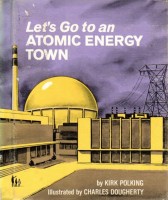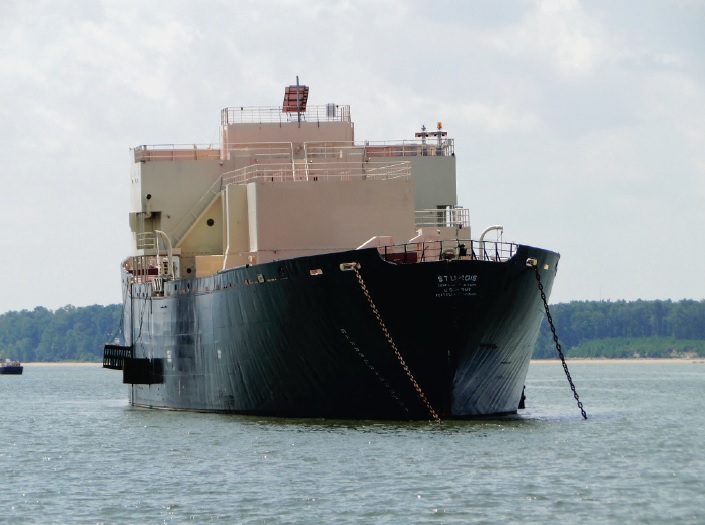Save Vermont Yankee. If not you, who? If not now, when?
I told some friends the other day that I often feel like a time traveler from the Age of Reason who sees questionable behavior and is forced by training to ask, "Why?"
The ANS Nuclear Cafe is a blog owned and edited by the American Nuclear Society. Information contained on the ANS Nuclear Cafe has been provided by numerous sources. Therefore, the American Nuclear Society assumes no responsibility or liability for the accuracy of information contained herein. DISCLAIMER: The views expressed in posted articles do not necessarily reflect the views of the American Nuclear Society. The views expressed here are those of the individual authors. ANS takes no ownership of their views. The American Nuclear Society assumes no responsibility or liability for any use or operation of any methods, products, instructions, or ideas contained on this site.

A message from Goodway Technologies
Optimizing Maintenance Strategies in Power Generation: Embracing Predictive and Preventive Approaches
I told some friends the other day that I often feel like a time traveler from the Age of Reason who sees questionable behavior and is forced by training to ask, "Why?"
 The 207th Carnival of Nuclear Energy has been posted at Next Big Future. You can click here to access this latest post in a long running tradition among the top English language pro-nuclear bloggers and authors.
The 207th Carnival of Nuclear Energy has been posted at Next Big Future. You can click here to access this latest post in a long running tradition among the top English language pro-nuclear bloggers and authors.
Studies by Janette Sherman and Joseph Mangano purporting to link radiation from Fukushima to health effects in the United States have made for alarming headlines in news outlets on occasion, and have come under fire by critics who charge flawed methodology (for example, What Can We Do About Junk Science and Researchers Trumpet Another Flawed Fukushima Study).
 In the 1960s, visions for nuclear power were hopeful and plentiful; nuclear plants of all sorts imaginable* were under consideration and under construction in areas both urban and remote, while future plans portrayed an enormous nuclear plant build-out with a complete fuel cycle that included fuel recycling and breeder reactors.
In the 1960s, visions for nuclear power were hopeful and plentiful; nuclear plants of all sorts imaginable* were under consideration and under construction in areas both urban and remote, while future plans portrayed an enormous nuclear plant build-out with a complete fuel cycle that included fuel recycling and breeder reactors.
Social exchange theory is a foundational notion in social psychology that posits a rational basis for human relationships. It arose in 1958 based on theoretical foundations in economics, sociology, and psychology. Fundamentally, social exchange theory relies on three propositions [1]:
The Centers for Disease Control and Prevention (CDC) estimates that 1 in 6 people get food poisoning each year in the United States and that 3000 die from foodborne illness. Food irradiation can drastically decrease these numbers by killing harmful bacteria such as E. coli and Salmonella in meat and produce. The U.S. government endorses the use of food irradiation, but does not educate the public about its benefits. Food irradiation has not caught on in the United States because consumers fear that radiation will mutate the food. The U.S. Food and Drug Administration (FDA) requires a label (pictured below) for any food that has been irradiated.
 The 206th Carnival of Nuclear Energy has been posted at The Hiroshima Syndrome. You can click here to access this latest post in a long running tradition among the top English language pro-nuclear bloggers and authors.
The 206th Carnival of Nuclear Energy has been posted at The Hiroshima Syndrome. You can click here to access this latest post in a long running tradition among the top English language pro-nuclear bloggers and authors.
Jacopo Buongiorno of the Massachusetts Institute of Technology discusses some of the advantages of a nuclear reactor concept under development in collaboration with industry and other universities: floating off-shore nuclear power plants, constructed entirely in a shipyard, anchored off the coast, linked to the electric grid via undersea cable. Earthquakes and tsunamis would not be a threat, the ocean would be readily available to serve as a heat sink for reactor cooling, emergency evacuation planning would be a lesser consideration...
Note by Rod Adams: This post has a deep background story. The author, Mike Derivan, was the shift supervisor at the Davis Besse nuclear power plant (DBNPP) on September 24, 1977, when it experienced an event that started out almost exactly like the event at Three Mile Island on March 28, 1979.
 The 205th Carnival of Nuclear Energy has been posted at Atomic Power Review. You can click here to access the latest post in a long running tradition among the top English language pro-nuclear bloggers and authors.
The 205th Carnival of Nuclear Energy has been posted at Atomic Power Review. You can click here to access the latest post in a long running tradition among the top English language pro-nuclear bloggers and authors.
The World Bank reports that fewer than 10 percent of African households have access to the electrical grid. Some countries such as Kenya and Nigeria are looking to add nuclear energy to their grids, Egypt has plans to implement nuclear energy and South Africa wants to expand its share. This video from Voice of America News discusses some recent developments in nuclear energy in Africa and pros and cons.

Nuclear barge STURGIS; photo from US Army Corps of Engineers
Last week, we were reminded of a mostly forgotten but ambitious effort spanning the late 1950's and 1960's by the Atomic Energy Commission (AEC) and the U.S. Army-to develop a versatile range of small nuclear power plants-when it was announced that CB&I had been awarded a contract to decommission the former Army nuclear power plant barge STURGIS. While many have recently touted the Russian Akademik Lomonosov as the "first floating nuclear power plant," the expected completion date for that plant in 2016 will put it almost exactly a half century later than the successful STURGIS.
The ANS Nuclear Criticality Safety Division (NCSD) is sponsoring a special session at the upcoming American Nuclear Society Annual Meeting in Reno, Nev., June 15-19. The session is titled "Critical and Subcritical Experiments" and will commence the morning of Wednesday, June 18. This session will contribute to the long history and hundreds of technical papers related to critical-mass experiments that first began at Los Alamos National Laboratory (LANL) in the 1940s.
ICOSA Media caught up with NuScale chief executive officer Chris Colbert and TerraPower CEO John Gilleland at the recent CERAWeek energy conference in Houston, Tex. The two leaders of these innovative nuclear energy companies discuss the how's and why's of their small and beautiful reactor designs-the NuScale Small Modular reactor and the TerraPower Traveling Wave reactor.
"Another victory like this will ruin us"
On March 31-April 1, Nuclear Energy Insider held its 4th Annual Small Modular Reactor (SMR) conference in Charlotte, NC (following on the 2nd ANS SMR Conference in November 2013-for notes and report from that embedded topical meeting, see here).
There has been an increasing amount of press lately about the growing number of nations on the African continent interested in exploring the benefits of nuclear energy. South Africa has led the way in this realm, having had operational nuclear power for many years. Kenya plans to follow next.
 The 203rd Nuclear Energy Blogger Carnival has been posted at Thorium MSR. You can click here to see this latest installment in a long running tradition among the top English language pro-nuclear bloggers and authors.
The 203rd Nuclear Energy Blogger Carnival has been posted at Thorium MSR. You can click here to see this latest installment in a long running tradition among the top English language pro-nuclear bloggers and authors.
Near Augusta, Georgia, the first new commercial nuclear power reactors built in the United States in 30 years continue to take shape. This latest video update features the recent heavy lift of the massive 5-story CA20 module, which will house the spent fuel pool, fuel transfer canal, and other essential components for Unit 3. The video also features a visit by US Secretary of Energy Dr. Ernest Moniz, day-to-day problem-solving operations at the site's operations control center (especially during recent unusually cold weather), and the immeasurable beneficial economic and other impacts on the region's economy and school systems. Fuel loading and connection to the grid is scheduled for Unit 3 in 2017, and Unit 4 in 2018.